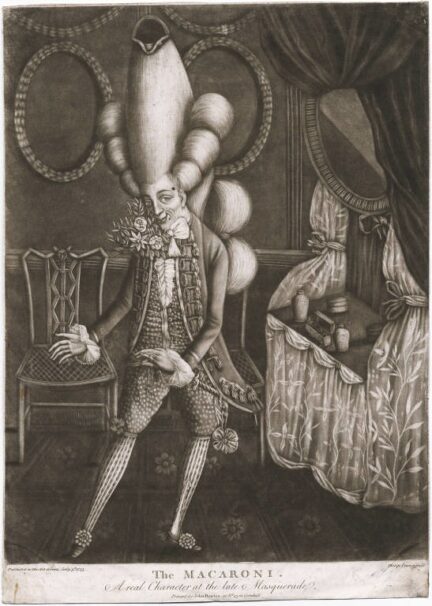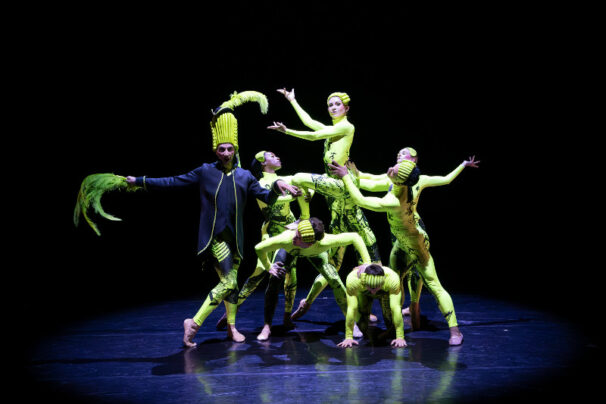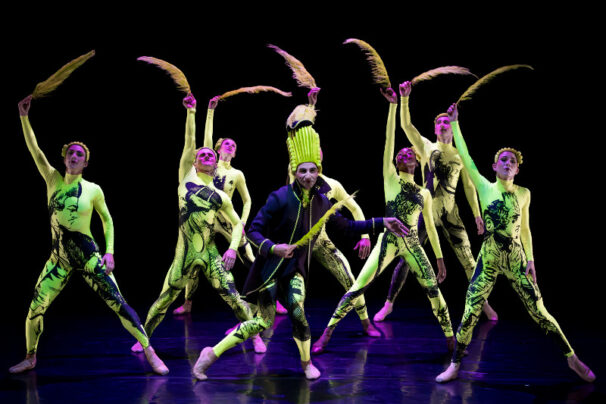

We all sang it as kids, didn’t we, and we loved it — the borderline-bombastic patriotic song with oom-pah-pah rhythm and funny lyrics. The alliterative “doodle-dandy” pays no rent in our ears ad infinitum. The opening stanza is custom made for those who don’t question the deep meaning of anything: Kids!
Yankee Doodle went to town
A-riding on a pony
Stuck a feather in his cap
And called it macaroni*.
Wait, wait. Why did he call a feather in his cap “Macaroni” ?
Dance has the answer! In a fun programming add to the Joyce Theater’s fall season, the Philadelphia-based BalletX is featuring a new work with that very name, “Macaroni.” It’s the latest from New Zealand-based choreographer, Loughlan Prior, who created it in Philly, the font of American Yankee-Doodleism. Its July premiere by BalletX garnered several positive reviews. In a scant few weeks, “Macaroni” arrives in New York.
Mr. Prior, a man after my heart, has deeply researched the use of this word dating to the 18th century. The term has British origins, as a pejorative term for effeminate men–the erstwhile “dandy.” It referenced a class of men who valued fashion and foreign travel, viz., the types who, returning from continental tours to meat-and-potatoes Great Britain, sang the praises of a new food category they’d encountered in Italy. That food was macaroni.
Then the label veered into a new direction. “In 1755 a British doctor named Richard Schuckburg penned new words to mock his American allies,” The Kennedy Center informs us. He portrayed the colonists as rude, crude, and cowardly. Wait. Were these the ancestors of Donald Trump? In the song, Schuckberg called the American fighter “a ‘doodle’—a country hick, a ‘dandy,’ a conceited jerk.” Again, that sounds oddly familiar! The song evolved — with lyric changes and added stanzas — as a big bundle of mockery, jingoism, homophobia, nativism. Mr. Prior’s goofy-yes-serious “Macaroni” portends to weave all this cultural lore into a light-hearted dance.
Before experiencing the BalletX version, let us enjoy dance’s greatest encounter with the patriotic ditty. It happened in a moment of welling patriotism, as the nation had just entered World War II. It was James Cagney’s Oscar-winning turn in Yankee Doodle Dandy (1942). The beloved movie was made at Warner Bros, and directed by Michael Curtiz — a Hungarian-Jewish immigrant. It was shot by ace cinematographer James Wong Howe, born in China’s Guangdong Province. And Cagney, with his Irish roots, played Jewish songwriter, George M. Cohan.
Cagney, much better known for snarling and exploding in anger in gangster roles in Warner crime dramas, came up with the goods: a no-holds melding of Irish step dancing, tap, and eccentric dance that lay down a rat-a-tat-tat underpinning to the actor’s inimitable talking/rapping/singing style. Cagney’s Best Actor Oscar, yes, reflected his overall performance, but gosh, the pinnacle was this four-minute sequence of uninterrupted Hollywood-dance bliss.
Warner’s Bros. dance dinosaurs, LeRoy Prinz and Seymour Felix, who are credited on the picture, contributed the overall staging and stuff for the chorus ladies with parasols, the dancing horse jockeys, etc. But Cagney worked closest with Jack (sometimes John) Boyle, a much unknown tap artist described by our dearly departed author-friend, Larry Billman, in his Film Choreographers and Dance Directors (McFarland, 1988).
John “Johnny” Boyle (1916-1965)
Boyle started a dancing school with Jack Donahue in New York in 1927 and one in Hollywood in 1933, coaching future greats Buddy and Vilma Ebsen, Ruby Keeler, Marilyn Miller, George Murphy, Eleanor Powell, Ginger Rogers and Fred and Dorothy Stone. James Cagney insisted that Warner Bros. hire Boyle to recreate George M. Cohan’s dance style and routines for him in the Academy Award winning film Yankee Doodle Dandy (1942).
Long live Yankee Doodle Dandy ~ Macaronis included!
BalletX | Joyce Theater, New York City | Sept 25-29



